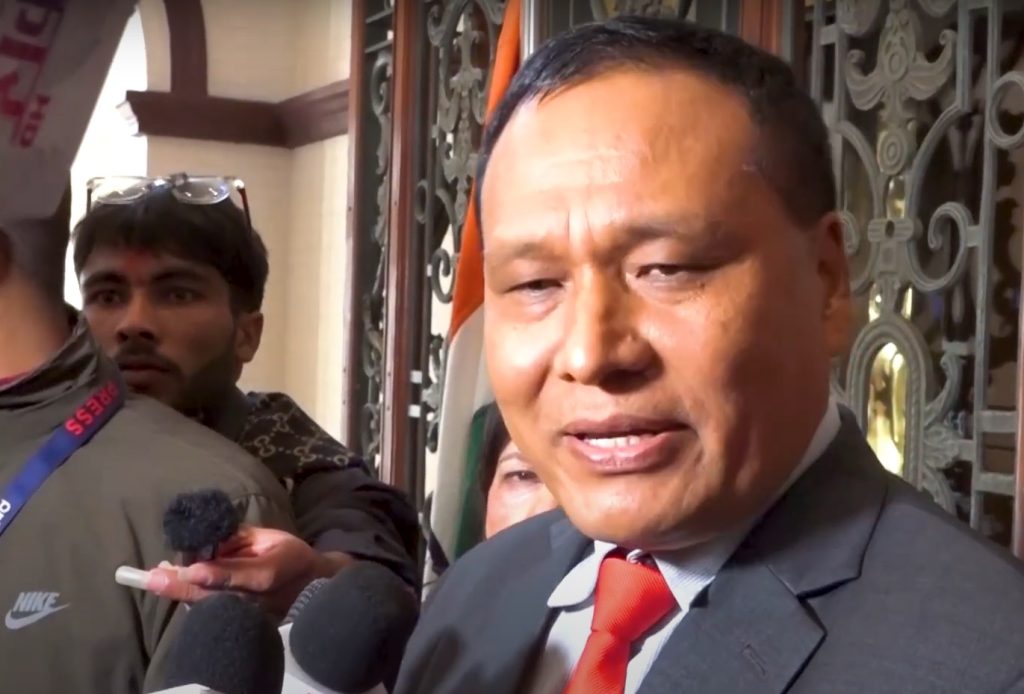
In order to provide a sufficient, dependable, high-quality, and secure supply of energy in the Kathmandu Valley, officials are building six substations as urbanization rises. To enhance the transmission and distribution infrastructure in the valley, the Nepal Electricity Authority (NEA) is constructing six 132/11 kV substations at different sites in Kathmandu and Bhaktapur.
According to the NEA, the Changu Narayan substation in Bhaktapur is prepared and just requires energization, while the Teku substation in Kathmandu is already functioning. Work is still being done on the Phutung and Mulpani substations, which should be operational in the next two months.
The Chobhar substation, which the NEA is building, is expected to be active by mid-July, and the Bhaktapur Thimi substation will be operational in eight months. The capacity of each substation is 90/90 MVA. These substations will enable the valley to manage an extra 500 megawatts of electricity once they are finished and put into service. Approximately 500 megawatts of electricity are currently needed in the Kathmandu Valley.
The substations’ land acquisition has been finished by the NEA. Additionally, it has completed the studies and other preparatory work needed to build a 220 kV ring around the outside of the Kathmandu Valley. Under development in the Tamakoshi and Sunkoshi river basins, the Lapsiphedi substation will provide the Kathmandu Valley with electricity from hydropower projects at 400/220, 220/132, and 132/11 kV levels.
By building new substations, automating old ones, burying power lines, installing new feeders and transformers, and fortifying the system, the NEA is pursuing projects to increase the dependability of the electrical supply system. In order to fulfill the increasing demand for energy in the Kathmandu Valley and provide a dependable, high-quality supply, Managing Director Kulman Ghising examined the substations that are currently under construction on Friday and encouraged that work be finished as soon as possible.
He said that once all of the substations that are currently under construction are operational, it will be much easier to manage Kathmandu’s electricity supply and demand, leading to a more dependable and higher-quality electricity supply. To improve the southeastern region of Kathmandu, authorities are completing the construction of a 132/11 kV substation at Mulpani in Kageshwori Manohara Municipality. They intend to connect the Chhapali-Bhaktapur 132 kV transmission line to the Mulpani substation to supply electricity. The substation has installed eight 11 kV feeders to supply electricity to areas like Jadibuti, Pepsi Cola, Kandaghari, Gothatar, Mulpani, Jorpati, Sanghu, and Thimi. NEA anticipates the substation to be operational by mid-April.
At Phutung, the NEA is also completing the building of a new 132/11 kV substation. To provide electricity to the region, they intend to connect to the Phutung substation’s 132 kV double-circuit transmission line between Balaju and Chapali. The substation would greatly enhance the electrical supply to places like Balaju, Nepaltar, and Goldhunga once it is operational.
Due to building delays in the Khokana, Bungmati, Harisiddhi, and Lamatar sections of the Thankot-Chapagaun-Bhaktapur 132 kV transmission line, authorities built a 132/11 kV substation at Chobhar, Kathmandu, to increase the electrical supply in the Kathmandu Valley. The Mata Tirtha substation will supply power to the substation. By the middle of July 2025, NEA hopes to have the substation up and running.
A 132 kV underground line is to be extended by the government from the Chobhar substation to the Lagankhel substation in Lalitpur via Chakrapath. The Lagankhel substation will be strengthened and upgraded to a 132 kV station. From there, the NEA intends to construct subterranean lines to Chapagaun and Harisiddhi.
Enhancement of the transmission and distribution system is being funded by the NEA, the Government of Nepal, and concessional loans from the World Bank, Japan International Cooperation Agency (JICA), and the Asian Development Bank (ADB).











